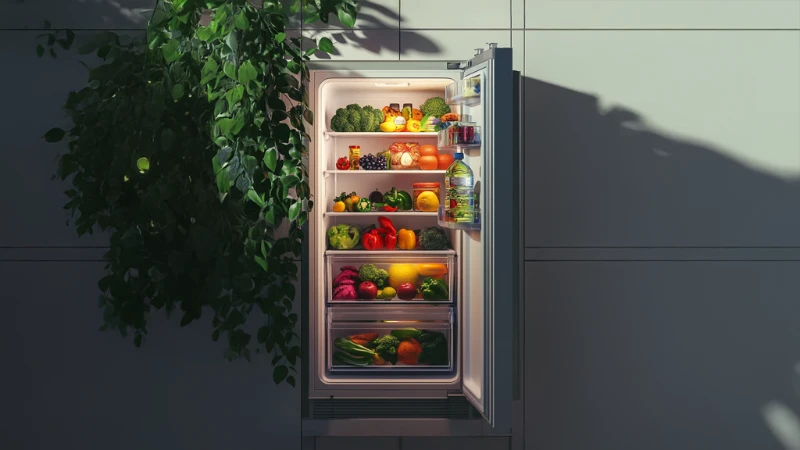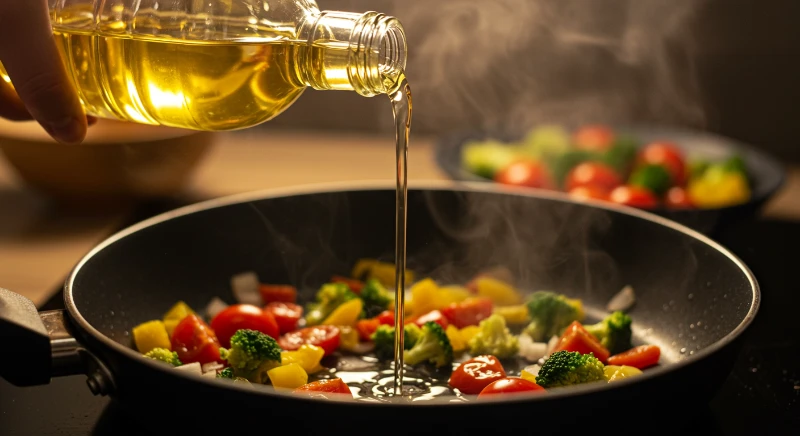Maintaining the correct temperature in your refrigerator and freezer is crucial for keeping your food safe and fresh. This guide will explain why specific temperatures are recommended, how to measure them, and the impact on your food storage.
Why Refrigerator and Freezer Temperatures Matter
Keeping food at the right temperature slows bacterial growth, which can lead to foodborne illnesses. Incorrect settings may cause food to spoil faster or, in the case of freezers, result in freezer burn.
-
Refrigerator temperature: Too warm, and bacteria multiply rapidly; too cold, and some foods may freeze.
-
Freezer temperature: If set incorrectly, it can lead to freezer burn or insufficient freezing, shortening the storage life of your items.
Ideal Refrigerator Temperature
The ideal refrigerator temperature is 35°F (1.6°C). Setting your fridge at this temperature keeps food safely below the spoilage threshold of 40°F (4.4°C) and above freezing at 32°F (0°C). This balance ensures that items like milk, fresh produce, and leftovers remain fresh for longer without freezing. Using a fridge thermometer is a great way to verify the temperature, particularly in older refrigerator models, to maintain consistent cooling.
Refrigerators often have varying temperature zones:
-
Back and bottom areas: These are usually the coldest parts due to proximity to cooling elements.
-
Door compartments: Warmest area, as it is exposed to room temperature every time the door is opened. Avoid storing milk or eggs here for longer shelf life.
Best Practices for Fridge Organization: Organizing your refrigerator properly can improve food safety and extend the freshness of your items. Meats should be stored on the bottom shelf, as this minimizes the risk of cross-contamination from potential leaks. Condiments, including ketchup and mustard, are best placed in the door compartments, where they are easy to access and less sensitive to slight temperature fluctuations. Fruits and vegetables should be kept in their designated drawers to maintain optimal humidity levels, preserving their freshness and flavor for a longer period.
Ideal Freezer Temperature
The optimal freezer temperature is 0°F (-18°C). This setting is essential to prevent bacterial growth and keep food safely frozen for extended periods while preserving its texture and flavor. At 0°F, frozen foods remain safe and retain their quality, as this is the standard used globally in food safety regulations.
To avoid freezer burn, it is important to wrap food properly. Using airtight containers or heavy-duty freezer bags minimizes exposure to air, which can dry out food and affect its taste.
Freezer Organization Tips: A well-organized freezer enhances efficiency and maintains temperature stability. Keeping the freezer full helps it retain cold better, but it is crucial to avoid overcrowding to allow proper airflow. Additionally, labeling and dating your items ensures you use older foods first, reducing waste and keeping your meals fresh.
How to Check and Adjust Temperatures
-
Use a thermometer: Place it in the middle of your fridge or freezer for an accurate reading.
-
Adjust settings: Most modern refrigerators and freezers have easy-to-use temperature dials or digital controls.
-
Allow time: Changes can take up to 24 hours to stabilize.
Common Issues and Solutions
Refrigerator Freezing Items: If your refrigerator is freezing items, it is often due to the temperature being set too low or because of restricted airflow. To resolve this issue, adjust the temperature to 35°F and ensure the shelves are not overcrowded. Proper air circulation allows the cooling system to function more effectively, preventing unwanted freezing.
Freezer Burn: Freezer burn occurs when food is exposed to air for extended periods or when there are significant temperature fluctuations. To prevent this, ensure all items are stored in airtight containers or securely wrapped. Additionally, maintain the freezer at a steady temperature of 0°F, which minimizes dehydration and keeps your food tasting fresh.
Conclusion
By maintaining these optimal temperatures, you’ll ensure your food remains fresh and safe to eat, saving you money and reducing waste.

